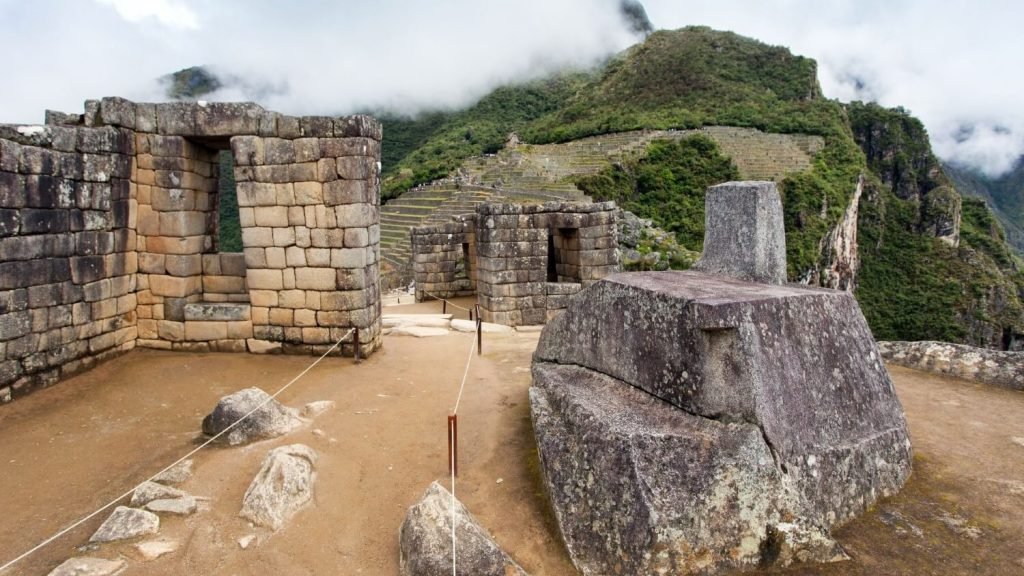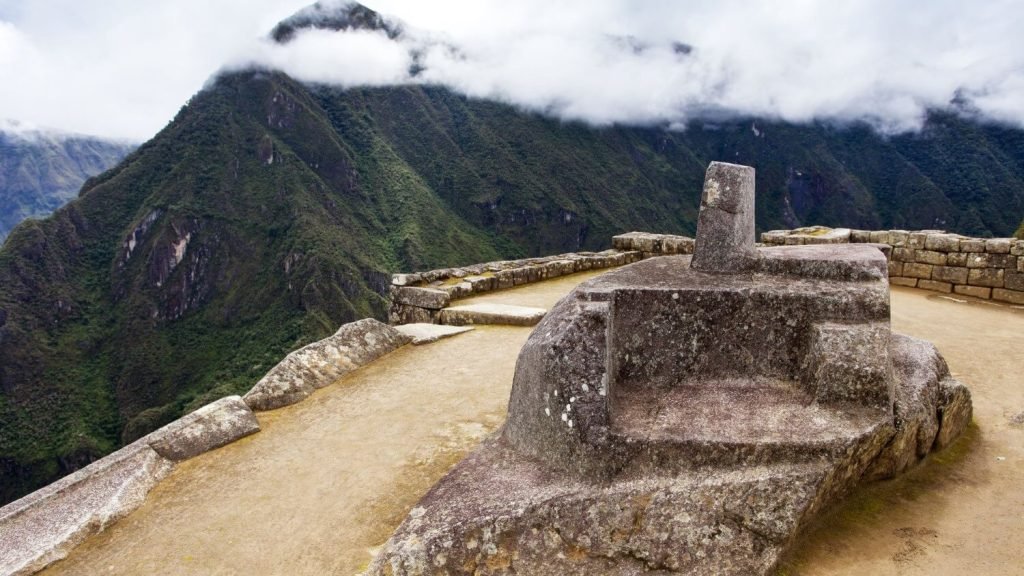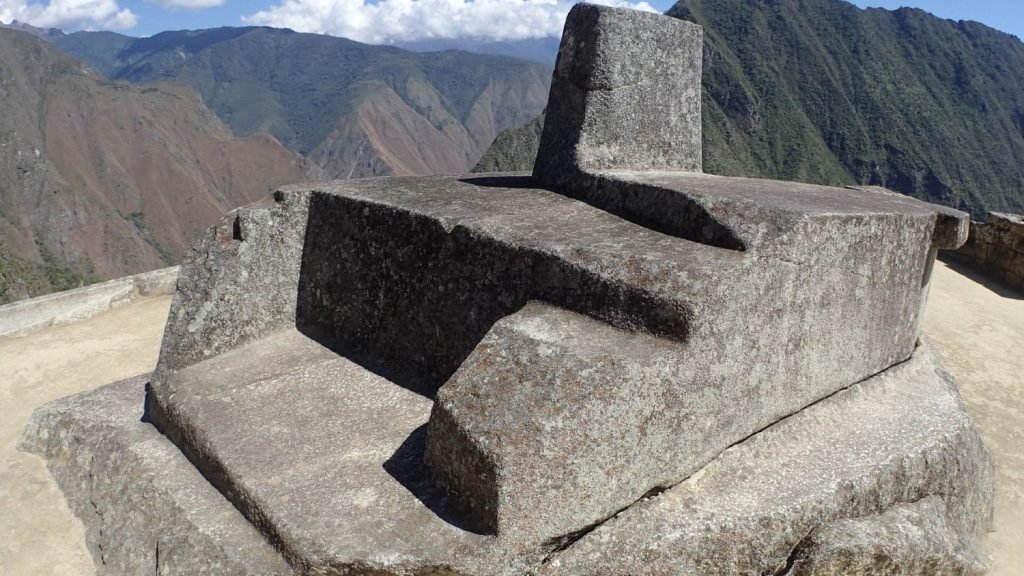Machu Picchu, the archaeological jewel of the Incas, is home to a unique construction that has captivated generations: the Intihuatana. This monument, often called the sundial of Machu Picchu, is not only an exceptional piece of engineering, but also a symbol of the Incas’ spiritual connection to the sun. In this detailed exploration, we will unravel the mysteries surrounding the Inti huatana, from its significance to its function and location.
The Intihuatana: Beyond a Carved Rock

What is the Intihuatana?
The Inti huatana is more than just a carved rock; it is an Inca masterpiece that has endured through time. This three-level polygon casts precise shadows, acting as a sundial that marked the sowing and harvesting seasons. Its name, derived from Quechua, reveals its essence: “where the sun is tied.”
The Function of the Intihuatana
What was the function of this Inca wonder? The Inti huatana not only served as an astronomical calendar, marking the rhythm of agriculture, but also as a sacred place. Here, the Incas performed religious rituals, honoring the sun as their main deity.
Discovering the Intihuatana in Detail

Structure and Energy
The Intihuatana is a monolithic construction with a cylinder-shaped top that directly receives the sun’s rays. Its four faces, oriented to the cardinal points, suggest a deep connection with nature. It is believed that this structure emanates energy, an experience that tourists can feel when they bring their hands close to it.
Strategic Location
Located in the ‘Hanan’ sector of Machu Picchu, on the slopes of a pyramidal hill. The Inti huatana becomes a focal point of the Inca trail. Two long stairways to the north and south facilitate access, guiding visitors through this wonder.
Practical Tips for Exploring the Intihuatana

Visiting Hours and Access
To get the most out of the experience, plan your visit during designated hours, generally from 7 a.m. to 10 a.m. You can access the Inti huatana through a tour to Machu Picchu or by purchasing independent tickets, with options such as the ‘Machu Picchu Solo’ which includes the visit.
Beyond Machu Picchu: The Intihuatana of Pisac
Don’t limit yourself to Machu Picchu; explore the Inti huatana at the archaeological complex of Pisac, a gem just an hour from Cusco. Similar in form and function, this Inti huatana is also known as the Temple of the Sun, offering a unique perspective of the sun’s movement.
Preserving the Inca Wonder
Although the temptation may be strong, it is forbidden to touch the Inti huatana to preserve its integrity. In 2000, an incident during filming damaged a portion of it, reminding us of the importance of protecting these sacred constructions.
The Intihuatana is not only a carved stone. It is a testament to the Incas’ advanced astronomical understanding and deep connection with nature. When exploring this marvel at Machu Picchu, visitors discover a sundial. Join us on this extraordinary journey and discover the magic of the Inti huatana at Machu Picchu!





